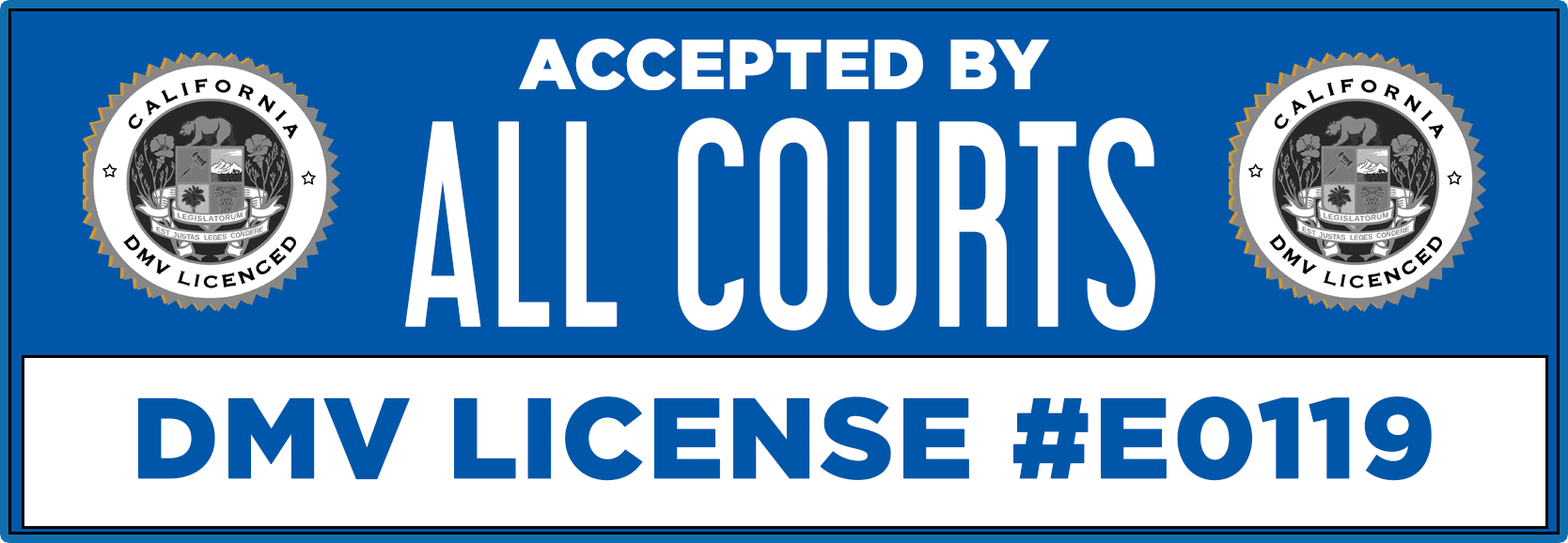A U-turn is a common driving maneuver that allows you to reverse your direction on the road quickly and efficiently. While it may seem like a simple action, executing a U-turn safely requires careful planning, awareness of your surroundings, and adherence to traffic laws. Whether you missed a turn, encountered a road closure, or simply need to change your route, knowing how to perform a U-turn correctly can make your driving experience smoother and safer. This guide will walk you through the essential steps and legal considerations for making a U-turn, helping you navigate this maneuver with confidence and caution.
What is a U Turn
A U-turn is a driving maneuver in which a vehicle makes a 180-degree turn to reverse its direction of travel on the same road. The name “U-turn” comes from the shape the vehicle makes during the turn, resembling the letter “U.” This maneuver is typically performed to change direction when the driver has missed a turn, needs to reverse course, or must avoid a road obstruction. U-turns are generally executed at intersections with traffic lights or designated turn lanes, but their legality and safety depend on local traffic laws and road conditions.

Situations Where Making a U-Turn is Necessary
There are several scenarios where making a U-turn becomes a practical and sometimes essential maneuver to change your direction of travel. While it’s always important to consider safety and legality, understanding when a U-turn is appropriate can help you navigate efficiently. Here are three common situations where a U-turn is needed:
1. Missed a Turn or Exit
It’s common to miss a turn or exit while driving, especially in unfamiliar areas or if you’re following GPS directions that don’t give enough notice. In these cases, a U-turn can be the quickest way to get back on track without having to take a series of detours. For example, if you were supposed to take a left turn but missed it, instead of driving far ahead looking for an alternate route, you can find a safe and legal spot to make a U-turn and return to your intended route. This is particularly useful in cities where taking multiple turns to circle back could waste time and fuel.
2. Encountering a Dead-End or No-Through Road
Sometimes, you may find yourself on a road that unexpectedly turns into a dead-end or a no-through road. This often happens in residential neighborhoods or industrial areas where roads are not well connected. Instead of reversing all the way back, which can be dangerous and time-consuming, making a U-turn allows you to safely and efficiently change direction and find an alternative route. It’s crucial to ensure that the road is wide enough and there are no restrictions on U-turns before performing the maneuver in this scenario.
3. Avoiding Traffic or Hazardous Conditions
In certain situations, you might need to make a U-turn to avoid an unexpected traffic jam, road closure, or hazardous conditions like an accident or severe weather. For instance, if you’re on a road where traffic is completely stopped due to a collision up ahead, and there’s no clear indication of when it will clear, making a U-turn and taking an alternate route might be the best option. Similarly, if you come across flooded roads or dangerous driving conditions, a U-turn can help you quickly and safely navigate away from the danger.
In all these scenarios, it’s essential to prioritize safety by checking for clear signs and ensuring there’s enough space and visibility to perform the U-turn safely.
Situations When You Cannot Make a U-Turn
Making a U-turn is not always permissible or safe, and there are specific situations and legal restrictions where it is prohibited. Here are five common examples, along with relevant legal codes where applicable:
1. In Front of a “No U-Turn” Sign
A U-turn is explicitly prohibited when there is a “No U-Turn” sign posted. These signs are placed in locations where making a U-turn would be unsafe or disruptive to traffic flow. The legal basis for this can often be found in local traffic laws or municipal codes. For example, in California, the Vehicle Code Section 22101(d) states that drivers must obey all posted traffic signs, including “No U-Turn” signs.
2. On a One-Way Street
U-turns are illegal on one-way streets because they go against the direction of traffic. This can cause confusion and potential collisions with vehicles traveling in the correct direction. According to the California Vehicle Code Section 21657, drivers are not permitted to make a U-turn on one-way streets unless at an intersection controlled by traffic signals where turning onto another one-way street is allowed.
3. Near or at a Railroad Crossing
Making a U-turn near or at a railroad crossing is prohibited due to the potential hazard it poses. Vehicles making a U-turn in this area could become stuck on the tracks, leading to dangerous situations. For example, the Texas Transportation Code Section 545.102 explicitly states that drivers may not make a U-turn within 100 feet of a railroad crossing if it interferes with the movement of any traffic.
4. In Business Districts (Except at Intersections)
In many jurisdictions, making a U-turn in a business district is prohibited except at intersections or designated turn areas. This is because the dense traffic and frequent pedestrian crossings in such areas make U-turns particularly dangerous. In California, for example, the Vehicle Code Section 22102 prohibits U-turns in business districts unless made at an intersection or a designated opening in a divided highway.
5. On Curves or Near the Crest of a Hill
U-turns are not allowed on curves or near the crest of a hill where visibility is limited. This is because oncoming traffic may not see a vehicle performing a U-turn until it is too late to avoid a collision. The California Vehicle Code Section 22105 states that a driver may not make a U-turn when their vehicle cannot be seen by other drivers approaching from either direction within 200 feet.
These restrictions are in place to ensure the safety of all road users, and it’s essential to be aware of and comply with local traffic laws when considering a U-turn.
How to Make a Safe U-Turn in 9 Steps
Making a U-turn can seem like a straightforward maneuver, but it’s important to approach it with caution and follow a series of steps to ensure safety and compliance with traffic laws. Here’s a detailed guide on how to make a U-turn safely:
Step 1: Understand the Regulations
- Check Local Laws: Before attempting a U-turn, be aware of the local regulations. U-turns are not allowed in all areas, and some places have specific signs indicating where U-turns are prohibited. In some jurisdictions, U-turns are only allowed at intersections, while in others, they may be permitted mid-block.
- Look for Signage: Ensure there are no signs such as “No U-turn” or “Left Turn Only” that would indicate a prohibition of this maneuver. Violating these signs could result in a traffic citation.
- Assess the Situation: U-turns should generally be avoided on highways, near the crest of a hill, or in areas with poor visibility.
Step 2: Prepare for the U-Turn
- Check Your Surroundings: Before you even think about changing lanes, check your surroundings. Look for pedestrians, cyclists, or any other potential obstacles.
- Use Your Mirrors: Check your rearview and side mirrors to ensure there are no vehicles rapidly approaching from behind. You need to be aware of the traffic around you.
- Signal Your Intentions: Turn on your left turn signal well in advance. This alerts other drivers of your intention to move left and eventually perform a U-turn.
Step 3: Move into the Left Lane
- Lane Change Procedure: When it is safe, gradually merge into the leftmost lane using proper lane-changing techniques. This typically involves checking your mirrors, looking over your shoulder to check your blind spot, and then gently steering into the lane.
- Maintain Speed: Keep your speed consistent with the flow of traffic. Abrupt changes in speed can confuse other drivers and increase the risk of a collision.
Step 4: Position in the Turning Lane
- Enter the Turning Lane: If there is a designated turning lane (usually at intersections), merge into it when safe. This lane is usually marked with arrows indicating left turns or U-turns.
- Come to a Complete Stop (if necessary): In many cases, you’ll need to stop at a red light or yield sign before making the turn. Make sure to completely stop if required, and wait patiently for the right moment.
Step 5: Assess the Traffic
- Check for Oncoming Traffic: Look for vehicles coming from the opposite direction. A U-turn requires sufficient time and space to complete the maneuver without cutting off any oncoming vehicles.
- Be Aware of Turning Vehicles: Watch for any cars making left turns from the opposite side of the intersection or other drivers in the same turning lane planning to turn left.
- Pedestrians and Cyclists: Always check for pedestrians crossing the street and cyclists on the road, especially in urban areas.
Step 6: Execute the U-Turn
- Wait for a Clear Gap: Do not rush. Wait until there is a large enough gap in traffic from both directions. This ensures that you have enough time to complete the turn without causing a hazard.
- Turn the Steering Wheel: Once you’re certain it’s safe, turn the steering wheel sharply to the left. The degree to which you turn the wheel depends on the width of the road and the sharpness of the turn.
- Move Slowly and Smoothly: Start the turn at a moderate speed. If you go too fast, you might not be able to control the turn, and if you go too slow, you might not complete it in time before traffic resumes.
Step 7: Enter the Appropriate Lane
- Aim for the Closest Lane: Your goal is to enter the closest lane on the opposite side of the road. If you are able to complete the turn tightly, enter the leftmost lane first. If your turn is wider, you may enter the right lane directly, but be cautious of vehicles in that lane.
- Check for Vehicles: As you enter the lane, make sure no vehicles are approaching from behind or from adjacent lanes. You may need to accelerate gently to match the speed of traffic.
Step 8: Complete the U-Turn
- Straighten the Wheel: Once you’ve made the turn and are in the correct lane, straighten your steering wheel.
- Turn Off the Signal: Cancel your left turn signal manually if it doesn’t turn off automatically.
- Accelerate to Traffic Speed: Gradually accelerate to the speed limit and flow of traffic. This helps prevent disrupting the movement of other vehicles.
Step 9: Adjust Your Position
- Merge if Necessary: If you entered the leftmost lane and need to move to a different lane, use your signal and perform a lane change when it is safe.
- Stay Alert: Continue to be vigilant for other vehicles, especially those that may not have anticipated your U-turn maneuver.
Other Laws to Consider When Making a U-Turn
When performing a U-turn, there are several additional legal considerations that drivers must be aware of to ensure they are complying with traffic regulations and maintaining safety. Here are some other important laws to keep in mind:
1. Yielding to Oncoming Traffic
- General Rule: Drivers making a U-turn must yield the right-of-way to all oncoming traffic and any vehicles approaching from the rear or sides. This means that you should only execute a U-turn when it is safe and clear to do so without interfering with other vehicles.
- Legal Basis: Many states have laws requiring drivers to yield to oncoming traffic when making a U-turn. For example, the California Vehicle Code Section 21801(a) specifies that drivers must yield the right-of-way to approaching vehicles until the U-turn can be made with reasonable safety.
2. Proximity to Intersections
- General Rule: U-turns should generally be made at intersections or designated openings on divided highways. Making a U-turn outside of these areas, such as mid-block, can be illegal in many jurisdictions.
- Legal Basis: In some states, like Florida, the law restricts U-turns to intersections unless otherwise indicated. Florida Statutes Section 316.1515 states that drivers must only make U-turns at intersections unless specifically permitted by posted signs.
3. Prohibition Near School Zones
- General Rule: U-turns are often restricted in or near school zones to protect children and pedestrians. This prohibition typically applies during school hours or when children are present.
- Legal Basis: Many states have specific regulations around school zones. For example, in Illinois, the Illinois Vehicle Code Section 11-802(b) prohibits U-turns in school zones when children are present.
4. Distance from Other Vehicles
- General Rule: There are laws regulating the minimum distance required between the turning vehicle and other vehicles on the road. Drivers must ensure that their U-turn does not create a hazard or cause other drivers to brake or swerve suddenly.
- Legal Basis: Some states specify a safe distance. For instance, New York’s Vehicle and Traffic Law Section 1161 states that a driver may not make a U-turn unless the turn can be executed safely and without interfering with other traffic.
5. Restricted Use of Divided Highways
- General Rule: U-turns are typically prohibited on divided highways, except at designated areas with median openings. Drivers must use the designated turn lanes and obey any posted signs.
- Legal Basis: Most states have similar laws to California’s Vehicle Code Section 21651(b), which prohibits U-turns on divided highways except at designated openings.
6. Speed Limits
- General Rule: The speed of surrounding traffic should be a consideration. Making a U-turn in high-speed zones (like on highways or fast-moving urban roads) can be illegal or extremely dangerous due to the time required to safely complete the maneuver.
- Legal Basis: While not directly stated in speed limit laws, laws on reckless driving or impeding traffic can apply if a U-turn is made inappropriately in high-speed areas, creating a dangerous situation.
7. Use of Turn Signals
- General Rule: Drivers must always use their turn signals when preparing for and executing a U-turn to alert other road users of their intentions.
- Legal Basis: Most states, such as the California Vehicle Code Section 22108, require drivers to signal for at least 100 feet before making any turn, including U-turns.
8. Restrictions in Urban and Residential Areas
- General Rule: In some urban and residential areas, local ordinances may restrict or prohibit U-turns altogether to maintain traffic flow and safety, particularly in congested areas.
- Legal Basis: Local municipal codes often have specific regulations that override state laws. It’s important to be aware of local restrictions and signage when driving in these areas.
Being aware of these additional laws and guidelines can help drivers make U-turns safely and legally, avoiding fines and potential accidents. Always be sure to double-check local and state traffic regulations, as they can vary significantly.
General Tips and Thought Process Before Making a U-Turn
Before deciding to make a U-turn, it’s essential to assess the situation carefully and ensure that the maneuver can be executed safely and legally. First, understand the local regulations regarding U-turns. In some areas, U-turns are allowed only at specific intersections, while in others, they may be prohibited entirely. Always be on the lookout for signs like “No U-turn” or “Left Turn Only,” as disregarding them can result in a traffic citation. Additionally, consider the environment: U-turns may be more restricted in urban areas due to heavy traffic and pedestrian activity, while rural areas might offer more flexibility.
Evaluate the road conditions.
A U-turn requires sufficient road width, so make sure the street is wide enough to accommodate the turn without encroaching on other lanes or needing to perform a multi-point turn, which can be dangerous in traffic. Assess the volume and speed of the traffic in both directions. Attempting a U-turn on a busy road or in high-speed zones can be risky, as can making the turn in locations with poor visibility, such as near curves or hills where oncoming traffic may not be visible.
Choosing a safe location is also crucial.
Intersections with dedicated turning lanes and traffic lights are generally the safest spots for U-turns, as they provide a designated space and time for the maneuver. Avoid making U-turns on highways or freeways where it is illegal and highly dangerous. In residential areas, be mindful of pedestrians, children, and parked cars that could obstruct your path or visibility.
Before making the U-turn, assess the surrounding traffic.
Check the distance and speed of oncoming vehicles, ensuring you have ample time and space to complete the turn without disrupting the flow of traffic. Also, be aware of vehicles behind you; if there is a vehicle closely following, it may be safer to pull over and wait for traffic to clear. Pay attention to adjacent lanes for any vehicles that may be turning or changing lanes unexpectedly, as they may not anticipate your U-turn.
Consider the necessity of the U-turn.
Ask yourself if the maneuver is essential or if there is a safer, alternative way to change direction, such as taking a left turn at a traffic signal or using a roundabout. If you’re following GPS navigation, double-check that it’s directing you to make a legal and safe U-turn, as navigation apps may not always account for local restrictions.
Finally, prepare for the maneuver by checking your mirrors and blind spots to ensure no vehicles or pedestrians are nearby.
Signal your intentions well in advance to alert other drivers and slow down gradually before the turn to maintain control of the vehicle. Plan your exit path and identify the lane you will enter after the turn. Be mindful of any obstacles like parked cars, cyclists, or road debris that could interfere with your maneuver. By considering these factors and planning ahead, you can make a U-turn safely and confidently.
Making a U-turn is a practical skill that every driver should master, but it requires more than just turning the steering wheel. By understanding the legal restrictions, assessing your surroundings, and following the step-by-step guidelines, you can ensure that your U-turns are both safe and effective. Always remember to prioritize safety over convenience, and when in doubt, find an alternative route to change your direction. With the knowledge and awareness you’ve gained from this guide, you can confidently perform U-turns whenever necessary, knowing that you’re doing so in the safest and most responsible way possible.





